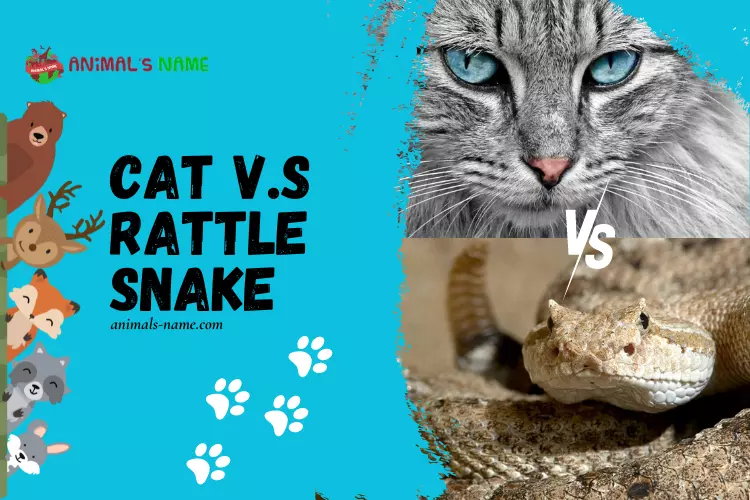Get ready for an epic showdown between two fascinating creatures: cats and snakes! These amazing animals are found all over the United States, from backyards to the wild, and each has unique superpowers.
Cats, our furry feline friends, are known for their agility, sharp claws, and the ability to purr their way into our hearts. They’re expert hunters and love to chase after things, whether it’s a toy mouse or a real one!
On the other hand, snakes are masters of stealth with their slithery bodies and incredible sense of smell. They can be found in various shapes and sizes, from the tiny garden snake to the mighty rattlesnake. Visit our incredible site related to animals, “Animals Name.”
In this exciting article, we’ll take you on a journey to explore the world of these two remarkable creatures. You’ll learn about their unique traits, hunting techniques, and what makes them special in the animal kingdom.
So, whether you’re a cat lover, a snake enthusiast, or just curious about the incredible diversity of wildlife in the USA, join us on this adventure as we compare and contrast the amazing cat and the mysterious snake. Let the battle of Cat vs. Snake begin! And if you want to see another battle, Moon Bear vs. Sun Bear is waiting for you.
Comparing a Cat and a Rattlesnake

| Attribute | Cat | Rattlesnake |
| Size | Weight: 7-10 pounds Height: 9-10 inches | Weight: 5-10 pounds Length: 4-8 feet (larger rattlesnakes are possible) |
| Speed and Movement Type | Up to 30 mph | 2-3 mph (sidewinder rattlesnakes can reach 18 mph, timber rattlesnakes strike at 2.9 meters per second) |
| Senses | Great vision in low light Excellent hearing for a small mammal | Heat-sensing pits to sense warm-blooded animals They have limited hearing but can sense vibrations and “taste” the air with their flicking tongues. |
| Heat-sensing pits to sense warm-blooded animals They have limited hearing but can sense vibrations and “taste” the air with their flicking tongues. | Relies on agility and speed | It relies on agility and speed |
| Offensive Capabilities | Can bite and claw enemies | Deadly venom and swift striking speed |
| Predatory Behavior | Ambush predator and opportunistic wild animal | Ambush predator that attacks from cover |
The Key Factors in a Fight Between a Cat and a Rattlesnake
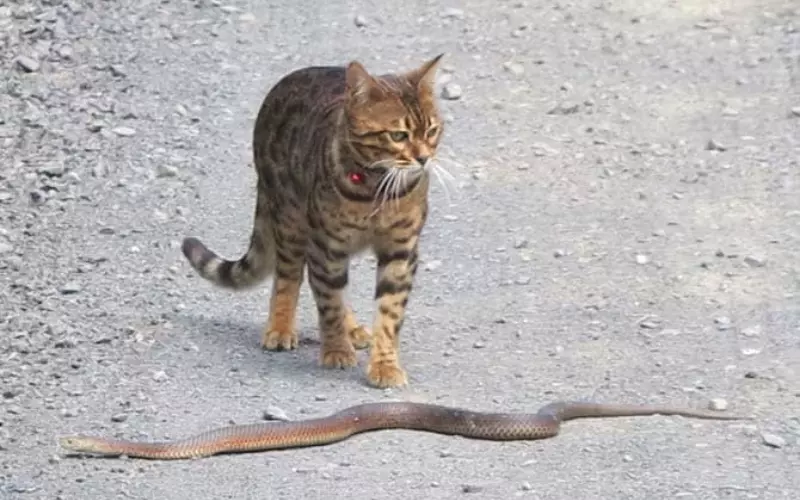
In a potential fight between a cat and a rattlesnake, several key factors come into play:
- Awareness: The initial factor is awareness. If the cat spots the rattlesnake, it might give it a wide berth due to its keen sense of smell and sight. On the other hand, the rattlesnake relies on its ability to sense heat and vibrations to detect potential threats.
- Distance: The distance between the cat and the rattlesnake matters. If the cat can keep its distance, it’s less likely to be in immediate danger.
- Speed and Agility: Cats are fast and agile, which can be advantageous if they need to dodge a snake’s strike quickly. However, rattlesnakes can strike with lightning speed, making their bites highly dangerous.
- Defences: Cats have sharp claws and teeth, which they can use for defence. Rattlesnakes have their venomous bite, and the distinctive rattle is a warning signal.
- Experience: A cat with experience dealing with snakes may have an advantage in understanding how to approach or avoid them.
- Predatory Behavior: Cats are natural hunters and may instinctively try to catch the snake. However, they may quickly learn to avoid snakes after a dangerous encounter.
- Size and Species: The size of the cat and the species of the rattlesnake matter. Some larger cats might be more capable of dealing with a snake, while certain species of rattlesnakes are more venomous than others.
- Human Intervention: If the encounter happens near humans, their actions can greatly influence the outcome. Immediate medical attention for a snakebite or assistance separating the animals can be critical.
Ultimately, it’s crucial to remember that interactions between cats and rattlesnakes should be avoided whenever possible. Both animals are part of their respective ecosystems, and it’s best to appreciate their unique qualities from a safe distance.
What Are the Key Differences Between a Cat and a Rattlesnake?

Cats and rattlesnakes are vastly different creatures in several key aspects. First and foremost, their physical characteristics set them apart. Cats are mammals with fur, sharp claws, and a keen sense of vision and hearing. Check the most demanding battle, Honey Badger vs. Lion. On the other hand, rattlesnakes are reptiles with scales, a unique rattle on their tails, and a nasty bite.
Another fundamental difference lies in their behaviour and lifestyles. Cats are agile hunters, relying on their claws and teeth to catch prey, and they often live in social groups or with humans as pets. Rattlesnakes are solitary creatures that rely on stealth and ambush tactics to catch their prey, primarily small mammals.
Regarding defence mechanisms, cats use their agility and sharp claws for protection, while rattlesnakes employ their venomous bite and the distinctive rattling sound as a warning signal. These differences underline how nature has uniquely adapted each species to its environment and ecological niche.
Physical Features of a Cat and a Rattlesnake

The physical features of a cat and a rattlesnake are strikingly different.
Cat
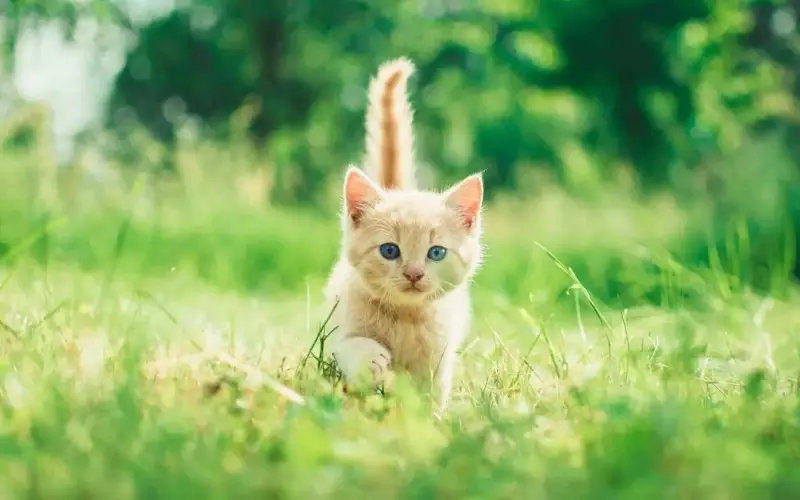
Cats are mammals characterized by their furry bodies and distinctive facial features. They have a set of sharp teeth designed for catching and tearing prey and retractable claws that they can extend for climbing and hunting. Cats typically have excellent night vision, allowing them to see in low-light conditions. They also possess a keen sense of hearing, which helps them detect even faint sounds, like the rustling of a small rodent. Cats come in various colours, patterns, and sizes, depending on their breed.
Rattlesnake
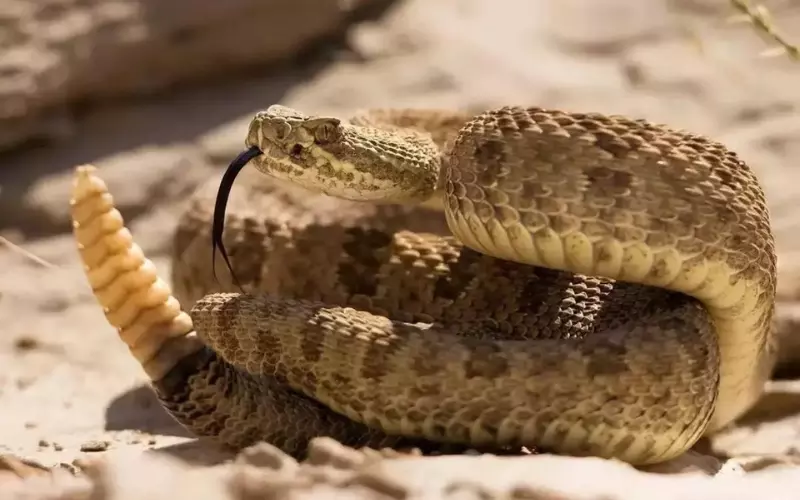
Rattlesnakes, on the other hand, are reptiles covered in scales. They have a long, cylindrical body with no fur or visible ears. One of their most distinctive features is the rattle at the tip of their tail, which they use as a warning signal when they feel threatened. Rattlesnakes have specialized fangs connected to venom glands, enabling them to deliver a nasty bite to immobilize their prey. They lack external ears but have specialized sensory pits near their nostrils, allowing them to detect infrared radiation and locate warm-blooded prey, even in the dark.
These differences in physical characteristics highlight the contrast between mammals like cats and reptiles like rattlesnakes, each adapted to their unique ecological roles and environments.
Cat vs. Rattlesnake: Speed and Movement

In comparing speed and movement, cats and rattlesnakes display distinct characteristics. Cats are known for their agility and swiftness. They can sprint at impressive speeds, reaching up to 30 miles per hour in short bursts, and exhibit remarkable jumping and climbing abilities. This agility allows them to chase down prey and navigate various terrains easily.
Rattlesnakes, on the other hand, have a different style of movement. They are not built for speed but rely on stealth and patience. Rattlesnakes move by slithering, using their serpentine bodies to slide smoothly along the ground. While not fast runners, they can strike with astonishing speed when they sense a threat or opportunity, delivering a nasty bite with precision.
Cat vs. Rattlesnake: Size

When it comes to size, there’s a clear difference between a cat and a rattlesnake.
Cats, like the ones we often see as pets, are usually bigger than rattlesnakes. They can be around 9 to 10 inches tall and can stretch out to be quite long, sometimes up to 30 inches or more, especially if they’re big cats like Maine Coons. Check the most demanding battle, Honey Badger vs. Lion.
On the other hand, rattlesnakes are generally smaller in terms of height. They’re more like a long tube, so they don’t stand tall like cats. A rattlesnake’s length and tail are typically around 30 inches.
So, in a size comparison, cats are usually larger and more towering than rattlesnakes. But remember, size isn’t everything, and both animals have unique features and abilities.
Who Would Win in a Fight Between a Cat and a Rattlesnake?

In a hypothetical fight between a cat and a rattlesnake, it’s important to note that a cat would typically win. Cats are agile, have sharp claws and teeth, and are natural hunters. They are quick on their feet and can usually avoid a snake’s strike.
However, it’s crucial to emphasize that it’s not a fair or recommended match. Encounters between cats and rattlesnakes can be dangerous for both animals, and they should avoid each other. Rattlesnakes have venomous bites, which can be life-threatening to cats if they get bitten.
In the wild, both cats and rattlesnakes have their roles in the ecosystem, and it’s essential to respect and protect these animals rather than pitting them against each other. So, while a cat might have the advantage in a fight, it’s better for everyone involved if they go their separate ways.
What Animal Can Take Down a Cat?
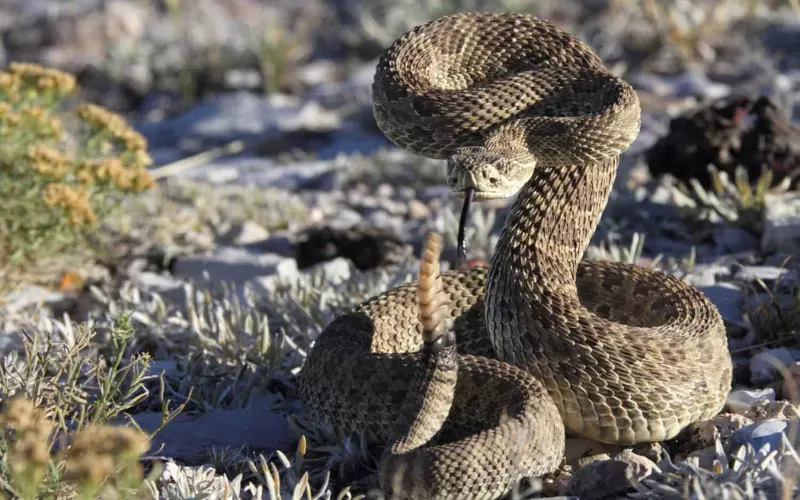
Several wild animals can take down a cat, depending on the circumstances and the cat’s size. Some of these animals include:
- Coyotes: Coyotes might threaten smaller domestic cats in certain areas, especially if they venture into the wild.
- Larger Predators: In regions where large predators like cougars or bobcats are present, they can overpower domestic cats.
- Birds of Prey: Large birds like eagles, owls, or hawks can harm small outdoor cats, particularly kittens.
- Dogs: Aggressive or larger dogs can harm or kill cats if they get into confrontations.
- Alligators or Crocodiles: In areas where these reptiles are found, they could potentially threaten cats near bodies of water.
- Foxes: In some situations, foxes might target smaller cats.
It’s important to remember that most of these interactions occur in the wild or if domestic cats roam into areas where these animals live. Keeping domestic cats indoors or in enclosed outdoor spaces can help protect them from potential predators.
Defence Mechanisms

- Cat’s Self-Defense Mechanisms:
Cats have several self-defence mechanisms. Their retractable claws are like hidden weapons. They can extend when needed, helping them climb trees, catch prey, or defend themselves. Cats also have sharp teeth for biting and tearing. Check the most demanding battle, Honey Badger vs. Lion. Feeling threatened, they may arch their backs, raise their fur, and hiss or growl to intimidate potential attackers. Their agility and speed allow them to evade threats by quickly climbing or running away.
- Snake’s Defense Mechanisms:
Like many snakes, rattlesnakes have unique defence mechanisms. Their most notable defence is their venomous bite, which can immobilize or deter predators. They also use camouflage to blend into their surroundings, making them harder to spot. Rattlesnakes can rattle their tails as a warning signal to keep potential threats at bay. When faced with danger, they may strike with lightning speed, delivering a potentially lethal bite.
- Avoiding Predators and Threats:
Both cats and rattlesnakes have strategies for avoiding predators. Cats often rely on their keen senses of sight and hearing to detect threats from a distance. They can also climb trees or seek shelter in safe hiding spots. Rattlesnakes use their ability to sense heat and vibrations to detect approaching threats, allowing them to stay hidden or prepare for defence when necessary. These animals have developed effective ways to protect themselves and avoid danger in their environments.
Domestication and Role of Cats as Pets
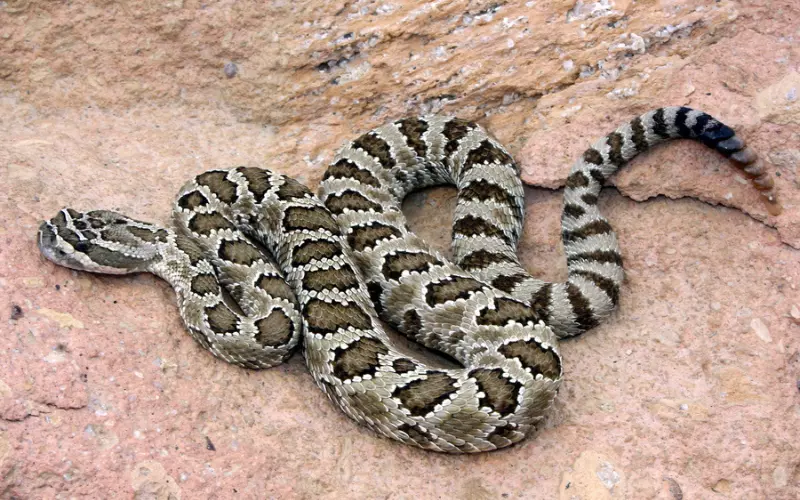
Cats are unique animals that have been our friends for a long time. While they are still wild in their hearts, they have become our pets. We call them “domesticated.”
As pets, cats have essential jobs. They keep our homes free from pesky rodents like mice and rats. Cats are also excellent companions. They love to cuddle and play with us.
Cats are like family members. We feed them, give them cosy places to sleep, and care for them when sick. They make us happy with their soft purring and funny antics.
So, cats have two roles: being our helpful protectors from pests and loving friends who fill our hearts with joy. That’s why we love having them as pets!
Human Fascination and Fear of Rattlesnakes

People have mixed feelings about rattlesnakes, which are a kind of snake that makes a rattling noise with their tails. They fascinate Some folks because they’re unique and can be found in different parts of the world, especially in the United States. Rattlesnakes are essential because they help control the population of small animals.
But there’s also a bit of fear regarding rattlesnakes because some have venomous bites that can be dangerous to humans. That’s why it’s crucial to be careful when you’re in places where rattlesnakes live and listen for their rattling sound as a warning.
So, while we find rattlesnakes fascinating, we also know they’re not pets, and we should be cautious and respectful when we encounter them in the wild.
The Role of Each Species in Ecosystems and Human Society
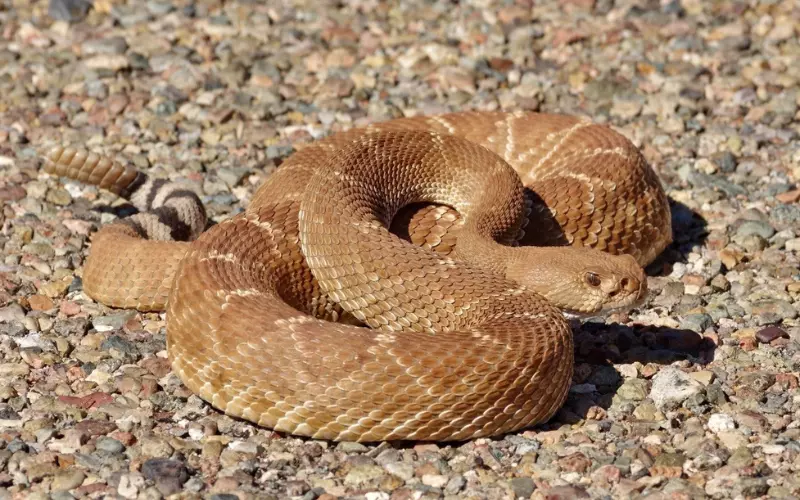
Cats: Cats play essential roles in ecosystems and human society. In nature, they help control the population of small animals like rodents, which can be pests to crops and homes. This makes them valuable to farmers and homeowners. Cats also provide companionship to people as beloved pets, offering love and comfort.
Rattlesnakes: Rattlesnakes, too, have their place in ecosystems. They help control the population of small mammals, like rats and mice, by hunting them. This keeps these rodent populations in check, which can help balance ecosystems. While rattlesnakes are venomous and should be respected from a distance, they are also a part of the natural world.
Cats and rattlesnakes have roles that contribute to the balance of ecosystems and remind us of the diversity of life on Earth. Respecting and protecting these animals for their unique places in our world is important.
Conclusion
In nature, cats and rattlesnakes are like two different stories. Cats are our playful and furry friends who keep us company and help us by catching pesky mice.
On the other hand, rattlesnakes are silent, slithery creatures that play their part by keeping small animals in check.
While these two animals may seem like they don’t have much in common, they each have unique roles in our ecosystems. Cats help people as pets by controlling pests, while rattlesnakes help balance nature by hunting smaller critters.
Remember, it’s essential to appreciate and respect all creatures in the animal kingdom, big or small, furry or scaly. Each has its job to do, making our world diverse and fascinating. So, let’s continue to learn about and protect these incredible animals and the environments they call home.
FAQ’s
Are cats afraid of snakes?
Cats often approach snakes cautiously. While some may be fearless, others may show caution around snakes.
Can the Cats win against Cobra?
It’s unlikely. Cobras are highly venomous, posing a grave danger to cats or other predators.
Will a snake hurt a cat?
Yes, snakes can harm cats with venomous bites. It’s essential to avoid snake-cat interactions.
Is a cat’s reaction faster than a snake’s?
Cats have quicker reflexes and can often react faster than snakes.
Who is stronger, a cat or a snake?
Strength varies, but cats are generally stronger in terms of physical prowess.
Is a cat immune to a snake bite?
Cats are not immune to snake bites. Venomous snake bites can be harmful to them.
Can a snake beat a lion?
Lions are much larger and more powerful than snakes, making them dominant.
What animal can fight a snake?
Animals like mongooses and birds of prey can challenge snakes.
Who is the most powerful cat?
The lion is often considered the most powerful of the big cats.
What is a snake’s biggest enemy?
Humans and large predators like eagles are threats to snakes.
What animal is a snake afraid of?
Snakes fear mongooses and some birds.
What animal fights king cobras?
Mongooses are known to confront and fight King Cobras.
Can a tiger beat a snake?
Tigers are much larger and more powerful than snakes and can easily overpower them.
Can a lion defeat a python?
A lion’s strength and size typically give it the upper hand over pythons.
What animal kills a lion?
Other lions or large predators like hyenas may threaten lions in the wild.
Who eats a king cobra?
Large birds of prey and mongooses are known to prey on king cobras.
What is a king cobra afraid of?
King cobras may fear large predators and humans.
Is a mongoose stronger than a snake?
Mongooses have agility and resilience, making them formidable opponents for snakes.
Why is the cobra called King?
The term “king” may refer to the cobra’s imposing size and the crown-like pattern on its head.
Where is the king cobra found in India?
King cobras are found in various regions of India, particularly in forested areas.
Is a baby cobra poisonous?
Yes, baby cobras can be just as venomous as adult cobras and should be treated cautiously.

Hi there, I’m Emily Buono, and I’m thrilled to introduce myself! Currently, I’m part of two fantastic places: I work as a VisEx at the New England Aquarium and as an RAS at MGH CCM.
I completed my education at the Mass General Research Institute and Stonehill College, which is located in Valatie Colony, New York, in the United States.
Now, here’s the exciting part: I absolutely adore animals! They captivate me, and I’m always eager to learn more about them. In fact, I write articles all about these incredible creatures.
In the past, I’ve worn many hats, such as being a biologist at the Maria Mitchell Association, a cashier, a floor organizer, and a visitor experience and research animal specialist.
My passion lies in exploring the world of animals and helping others understand them better. So, if you ever have questions about animals, feel free to reach out. I’m here to make animal info easy and fun to grasp!

